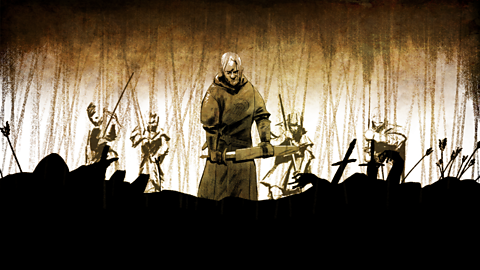Harold II was crowned King of England in January 1066, but he had not been the only contender for the English throne. On September 25th that year, Harold fought off a bloody invasion from the Norwegian King Harald Hardrada at the Battle of Stamford Bridge. Only three days later, William Duke of Normandy landed at Sussex, intent on claiming the English Crown.
William was a strong, experienced military commander with an iron will. He claimed the former King, Edward the Confessor, had named him heir to the English throne. William also alleged that Harold had come to France in 1064 and swore on religious relics to support him as the next king of England. William was told of Harold's coronation while out hunting. He had been usurped by the very man who had allegedly sworn to support him. According to the Normans, Harold had defied William, but worse, he had defied an oath sworn to God. Outraged, William began to gather support and plan his invasion. He promised land in England to those who helped him overthrow Harold. The Pope in Rome, no doubt hoping to spread the power of the Church in Europe, even issued him with a papal banner. Now he had the blessing of the Church.
Modern historians agree that William had a huge army of around 7,000 men and a fleet of approximately 700 ships. But by the time William's fleet was ready to sail, strong northerly winds hit, forcing William to wait for several weeks. In late September, the winds finally changed and the Normans sailed to southern England. Rather than advancing further inland, which invading armies normally did, William provoked Harold by devastating his former earldom and waited for Harold to come to him. As soon as Harold heard the news, already battle-weary, he once again raised an army and sped south.
At dawn on the morning of the 14th October 1066, William, his papal banner raised and wearing the very relics round his neck which he claimed Harold had sworn on, marched his army just over 10 kilometres to confront Harold. The details of exactly what was to follow and where it took place vary considerably. But we do know that at about 9am the battle for the English Crown began. The English were assembled on the crest of a small hill, flanked by two streams with woods behind to make it difficult to retreat. Here they created a strong shield wall with Harold at the centre. The Normans were drawn up in three lines below.
(Battle cries)
The English and Normans' armour was very similar. Both sides wore conical-shaped iron helmets with a nasal, a metal strip which covered the nose to protect part of the face. Men of rank also wore the mail coat made of iron rings. It offered both protection and manoeuvrability but was heavy. But while the English had the Dane axe and used a defensive shield wall tactic, the Normans had 2,000 cavalry which English battlefields had not witnessed before on this scale. They also had a huge line of archers. Some of these apparently used crossbows. Unknown to the English, these powerful, mechanical weapons required less strength and training than the ordinary bow and arrow.
The Norman archers attacked first, but the distance was great and their arrows mostly rebounded or flew above the Anglo-Saxons' heads. It was then the turn of the mounted Norman knights, but the horses found it almost impossible to charge up the steep slope. Eventually, the English shield wall pushed forwards. This forced the Normans back down the hill and a rumour began to spread that William had been killed. But the story goes that William lifted up his helmet and called out that he was alive and with God's help would win! Then he decided to try an old Norman tactic, the feigned retreat. The Normans could not win the battle unless they broke the English line, which was packed so tightly, it was said the dead were unable to fall. But if groups of cavalry pretended to flee, the English would believe they had won and chase after them. The cavalry could then quickly swing round, charge back and encircle the English pursuers, breaking the shield wall. The wall began to weaken. And as dusk drew in, William ordered his archers to attack once more. The English wall opened and Harold was finally killed. The Bayeux Tapestry illustrates him being shot in the eye or cut down, but no one knows if this is what really happened. The Normans had won. The last Anglo-Saxon King of England was dead, William had become the Conqueror and now he set off to London to claim the English throne.
tments or assistance, feel free to let me know!
Video summary
In late September 1066 the winds change direction and William of Normandy finally arrives in Sussex for the decisive battle against the Anglo Saxon army led by King Harold.
Harold's army has raced south from Yorkshire to fight the Normans.
They meet on a hill in Sussex and a long, bitter, battle takes place before Harold is killed and William is the victor.
But does that mean he is in control of the whole of England?
Teacher Notes
Key Stage 3:
Students could research the Bayeux Tapestry and it's version of the Battle of Hastings. To what extent does that version agree with the one used in this film? Do the students think we will ever know exactly what happened at Hastings?
Key Stage 4:
Students could make a list of all the causes of William's victory at Hastings and then sort them into long-term, medium-term, and short-term.
They could then resort them according to their significance - place the most important ones on the left and the least significant ones on the right on a line across your page. What, in their opinion, was the main cause of William's victory at Hastings?
This clip will be relevant for teaching History in secondary schools in the UK. This topic appears in OCR, Edexcel, AQA, WJEC KS4/GCSE in England and Wales, CCEA GCSE in Northern Ireland and SQA National 4/5 in Scotland.
1066: The claimants to the throne (1/6) video
Edward the Confessor died in January 1066 without a son or heir. Who would be chosen to be king?
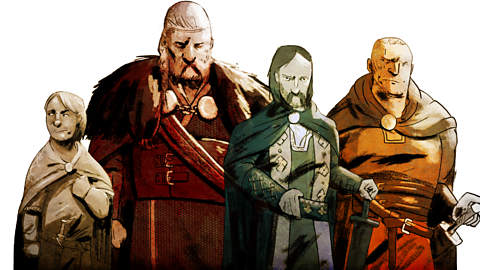
1066: The Battle of Fulford (2/6) video
In the first major battle of 1066, the Viking king of Norway, and Harold Godwinson's own brother Tostig, invade the north of England.
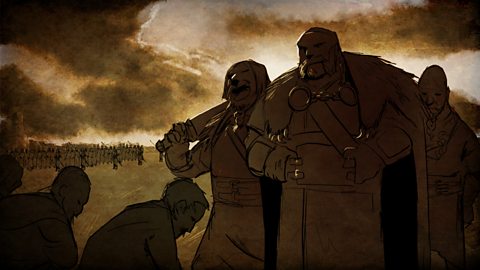
1066: The Battle of Stamford Bridge (3/6) video
The Battle of Stamford Bridge was the second major battle in the fight for the throne in 1066 and two of the four contenders were killed.
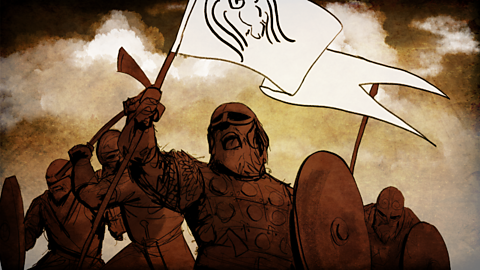
1066: King William and Domesday Book (5/6) video
How William the Conqueror secured control over England.
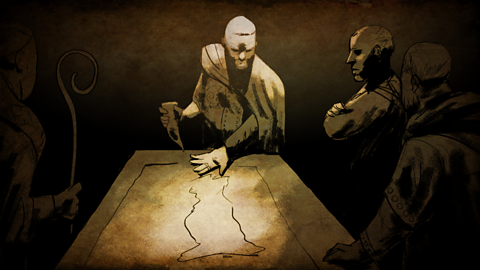
1066: Revolt and resistance (6/6) video
How did the Anglo-Saxons resist Norman rule after 1066?
